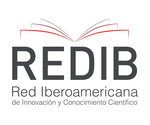Treatment of sialorrhea with botulinum toxin in children with cerebral palsy
DOI:
https://doi.org/10.20453/rhr.v2i1.3694Abstract
Objective: To determine the utility of botulinum toxin in the treatment of sialorrhea in children with Cerebral Palsy. Material and Methods: Experimental, longitudinal, cohort and open prospective study. Six subjects between 6 and 14 years of age with cerebral palsy and moderate to severe sialorrhea. Subjects presenting moderate sialorrhea were injected with 5 units of botulinum toxin and severe sialorrhea, 10 units of botulinum toxin in the submaxillary and parotid glands. Injections performed under ultrasound localization. Quantification of drooling using frequency and severity scale. Visual analog scale to determine degree of salivation and level of satisfaction level post-injection. Swallowing pre and post injection was evaluated with an evaluation by speech therapist. Results: All subjects were successfully injected with botulinum toxin A without systemic or local complications. There were no adverse effects on swallowing. Drool quantification was more indicative with the Visual Analog Scale. The beneficial effect of the treatment was observed between the third and seventh day, only one case did not improve until after the first month. Conclusions: Botulinum toxin A is a minimally invasive and potentially safe and promising treatment for sialorrhea in children with Cerebral Palsy.
Downloads
Published
How to Cite
Issue
Section
License
All articles published in the Revista Herediana de Rehabilitación are under a Creative Commons Reconocimiento 4.0 International license.
The authors retain the copyright and grant the journal the right of first publication, with the work registered with the Creative Commons License, which allows third parties to use what is published whenever they mention the authorship of the work, and to the first publication in this magazine.
Authors can make other independent and additional contractual agreements for the non-exclusive distribution of the version published in this journal, provided they clearly indicate that the work was published in this journal.
The authors can file in the repository of their institution:
The research work or thesis of degree from which the published article derives.
The pre-print version: the version prior to peer review.
The Post-print version: final version after peer review.
The definitive version or final version created by the publisher for publication.











 Esta obra está bajo una
Esta obra está bajo una 